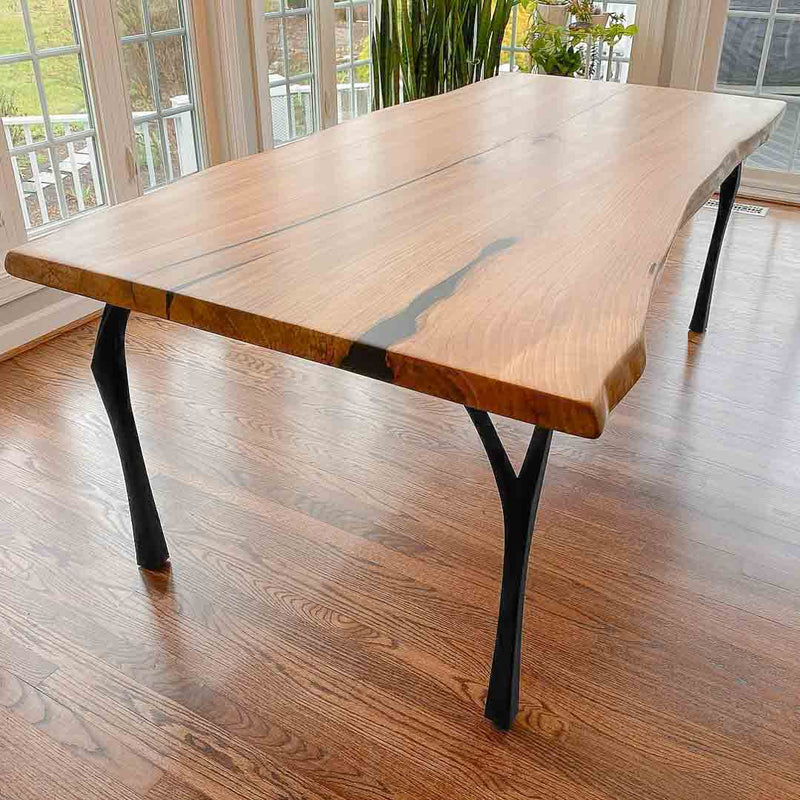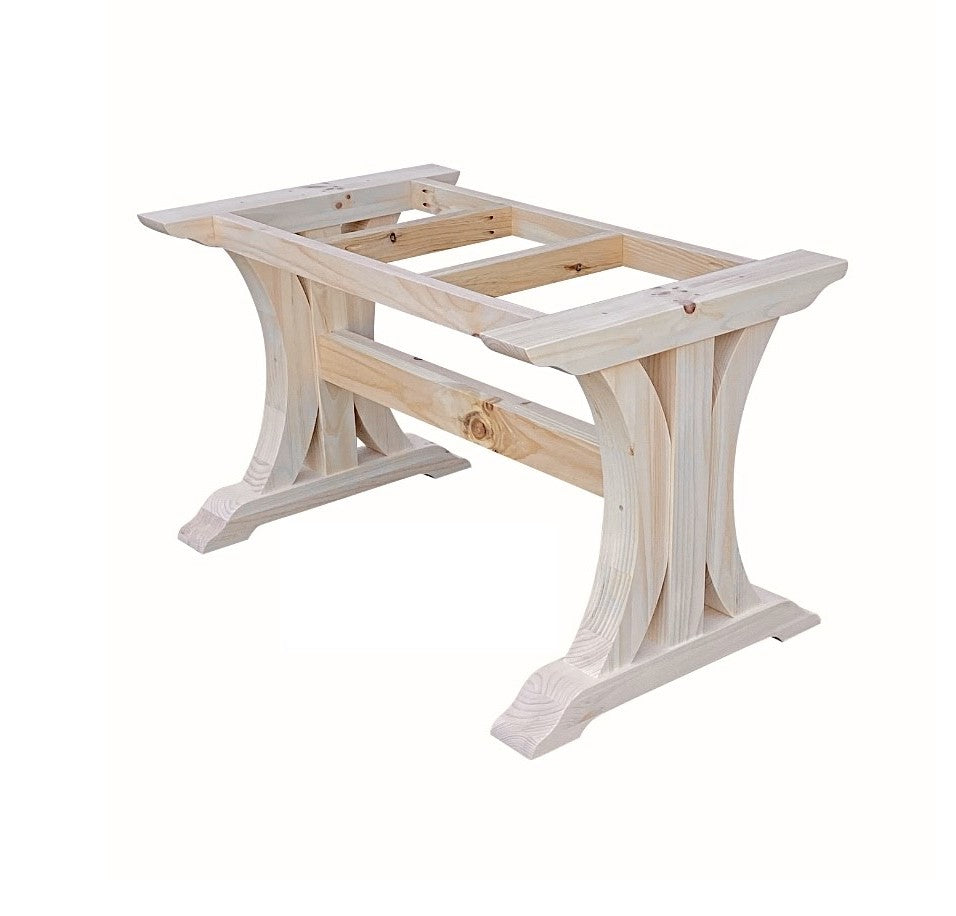From Traditional to Modern: Discover the Perfect Dining Area Table Legs for Your Style
The option of dining-room table legs plays a critical function in defining the overall personality of your room, bridging the void in between conventional workmanship and modern-day aesthetic appeals. While classic styles such as cabriole and turned legs evoke a sense of classic class, modern designs like hairpin and geometric choices present an opportunity for striking aesthetic interest. Evaluating the best equilibrium between these styles calls for a nuanced understanding of your existing design and personal taste. As you consider these elements, the question stays: just how can you seamlessly integrate these diverse leg styles to develop an unified dining experience?
Understanding Table Leg Styles
The selection of dining area table leg designs can dramatically influence both the looks and functionality of the room. Each leg style adds one-of-a-kind sensible features and aesthetic aspects, dealing with diverse layout choices and use demands. Recognizing these styles is important for picking the appropriate eating table that straightens with your overall interior decoration vision.
As an example, conical legs offer a tidy, classic look that can enhance an area's elegance, while pedestal bases provide security and take full advantage of legroom, making them excellent for smaller rooms. Hairpin legs, a characteristic of mid-century modern-day design, present a commercial flair, enabling an airy, open feeling. Trestle legs evoke rustic charm, providing robust assistance and a feeling of eternity.
Moreover, the selection of products plays a significant role. Wood legs can bring warmth and texture, whereas metal alternatives often convey a streamlined, modern vibe. Inevitably, comprehending table leg styles is essential for creating a natural dining location that mirrors individual design while making sure functionality and comfort. By thoughtfully considering these aspects, you can improve both the aesthetic and useful appeal of your dining space.
Conventional Table Leg Options
When picking dining-room table legs, standard choices usually personify ageless beauty and craftsmanship. These layouts reflect a rich heritage and a commitment to top quality, making them perfect for those that appreciate classic appearances.
Among one of the most iconic typical leg styles is the cabriole leg, defined by its stylish curved shape. This style usually features decorative makings and is most generally discovered in Queen Anne and Chippendale furniture. One more preferred option is the turned leg, which boasts a collection of smooth, rounded forms that supply a traditional appearance while keeping stability.
In addition, the straight leg, while simple, provides a basic and tough structure that can blend seamlessly with a variety of tabletop designs. For those attracted to ornate describing, claw-and-ball feet legs stimulate a feeling of magnificence and can serve as a stunning centerpiece in any type of dining space.
Lastly, stand bases, although not strictly legs, provide an alternative typical option that enables ample legroom and can be magnificently carved. Each of these traditional leg designs contributes to the total atmosphere of a dining space, weding feature with visual appeal.

Modern Table Leg Layouts
Modern table leg layouts use a diverse series of designs that emphasize clean lines and ingenious products. These layouts usually prioritize capability while acting as striking centerpieces within a dining room. Minimal looks prevail, with legs crafted from materials such as metal, glass, and engineered timber, which add to a contemporary and ventilated feeling.
One preferred layout is the hairpin leg, characterized by its slender, conical structure that gives stability without reference frustrating the table top (dining room table legs). This style is commonly found in mid-century contemporary furnishings and can effortlessly match various table forms. Another fad is the use of geometric forms, where legs may take on asymmetrical or angular types, adding visual interest and a touch of creativity

Blending Styles for Special Rooms
Commonly, homeowners seek to develop distinct dining areas that show their personal style by mixing different layout components. This strategy enables the consolidation of diverse aesthetics, leading to an unified yet distinctive environment. Combining a rustic wood table with smooth, modern metal legs can produce a captivating contrast that elevates the area's general appeal.
Additionally, incorporating vintage table legs with contemporary table tops can evoke a feeling of background while preserving a contemporary sensibility. Such combinations not just display individual preference but additionally urge imagination, permitting property owners to curate a room that really feels both individual and welcoming.
Color plays a vital role in this blending process; picking table legs that match or comparison with the existing color pattern can boost aesthetic interest. Whitewashed legs can soften the boldness of a dark table surface, developing a well balanced visual.
Tips for Selecting the Right Legs
Choosing the right table legs is important for accomplishing both performance and visual charm in your dining space. Begin by taking into Read More Here consideration the overall style of your area. Conventional settings profit from legs that feature detailed carvings or transformed layouts, while modern areas might require smooth, minimal designs.
Following, assess the height and security of the legs. dining room table legs. Typical table range in between 28 to 30 inches in height, so make certain the legs match this measurement for convenience. Additionally, durable products, such as hardwood or steel, can enhance security and longevity
Review the leg form as well-- choices consist of directly, tapered, or stand layouts. Straight legs supply a classic look, while conical legs can include a touch of sophistication. Pedestal bases provide adequate legroom and are suitable for smaller sized areas.
Verdict
In recap, choosing the perfect dining-room table legs calls for careful factor to consider of both modern-day and traditional styles. Standard choices such as cabriole and turned legs provide timeless style, while modern-day designs like barrette and geometric forms offer a modern touch. By balancing leg style, elevation, and product with the overall design, a natural and inviting atmosphere can be attained. Eventually, the selected table legs ought to mirror the wanted visual, improving the dining experience within the room.
The range of eating space table leg designs can significantly affect both the looks and capability of the space. Ultimately, recognizing table leg styles is necessary for developing a natural dining area that reflects personal design while ensuring usefulness and comfort.One of the most iconic traditional leg styles is the cabriole leg, defined by its stylish bent form. Straight legs provide a timeless appearance, while tapered legs can include a touch of style.In recap, picking the suitable dining room table legs requires cautious consideration of both modern and traditional styles.